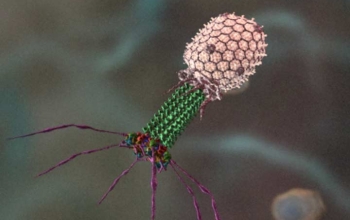·
The process of
composting by using Earthworm is called Vermicomposting.
·
During
Vermicomposting, earthworms convert the complex form of substances into simple
form of end product.
·
Vermiculture means scientific method of breeding and raising
earthworms in controlled conditions.
·
Vermitechnology is the combination of Vermiculture and
Vermicomposting.
Earthworms used in Vermicomposting
Earthworms
are also called as Living composters because they live in the soil, mixing it,
making it porous as they help decompose soil organic matter. Earthworm casts
are the excrete of earthworms. These Earthworm casts contain five times the
nitrogen of ordinary soil, seven times the phosphorus, eleven times the potash,
two times the calcium and magnesium, and eight times the Actinomycetes.
The most common Earthworm species used for
Vermicomposting are:
a)
Drawidiella
nepalensis
b)
Eisenia
foetida
c)
Eisenia
andrei
d)
Lumbricus
rubellus
e)
Eudrilus
euginiae
f)
Perionyx
excavates
Substrates
used for Vermicomposting
1) Small Scale
(or) Home System
·
Fruit wastes (Banana and Orange peels)
·
Vegetable wastes
·
Tea waste
·
Coffee waste
·
Egg shell waste
·
Grain wastes
·
Leaves
2)
Large Scale (or) Commercial
·
Cow or pig manure
·
Sewage sludge
·
Brewery wastes
·
Sugar mill wastes
·
Agricultural wastes
·
Cotton mill wastes
·
Wood chips
Vermicomposting
process
1)
Preparation of pots or cement tanks
2)
Addition of substrates or waste materials (Waste should be used in
single or double or triple for composting)
3)
Application of Earthworms
4)
Vermicomposting of wastes for 90 days.
5)
Checking of various parameters during Vermicomposting at 30 days
interval for 90 days (30th Day, 60th Day and 90th
Day).
6)
During Vermicomposting, special care should be taken to prevent
the vermicompost tank from various insects and pests.
Parameters to be checked during
Vermicomposting
1) Temperature,
pH and Moisture
2)
Organic carbon content (Before composting high & after
composting becomes low)
3)
Nitrogen content (Before composting low & after composting
becomes high)
4)
Phosphorous content (Before composting low & after
composting becomes high)
5)
Potassium content (Before composting low & after composting
becomes high)
6)
Enzymes content (Before composting low & after
composting becomes high)
7)
Minerals content (Before composting low & after
composting becomes high)
8)
Cellulose content (Before composting high & after composting
becomes low)
9)
Hemicellulose content (Before composting high & after
composting becomes low)
10) Lignin content (Before composting high &
after composting becomes low)
Advantages
of Vermicomposting
1) Vermicompost
is rich in all essential plant nutrients.
2) Vermicompost
provides excellent effect on overall plant growth, encourages the growth of new
3) Vermicompost
is free flowing, easy to apply, handle and store and does not have bad odour.
4) It
improves soil structure, texture, aeration and water holding capacity and
prevents soil erosion.
5) Vermicompost
is rich in beneficial micro flora such as a fixers, P- solubilizers, cellulose
decomposing microflora etc., in addition to improve soil environment.
6) Vermicompost
contains earthworm cocoons and increases the population and activity of
earthworm in the soil.
7) Vermicompost
neutralizes the soil protection.
8) Vermicompost
prevents nutrient losses and increases the use efficiency of chemical
fertilizers.
9) Vermicompost is free from pathogens, toxic
elements, weed seeds etc.
10) Vermicompost
minimizes the incidence of pest and diseases.
11) Vermicompost
enhances the decomposition of organic matter in soil.
12) Vermicompost
contains valuable vitamins, enzymes and hormones like auxins and. gibberellins.
:max_bytes(150000):strip_icc():format(webp)/portrait-of-louis-pasteur-in-his-laboratory-517443464-5c897947c9e77c00010c2303.jpg)





